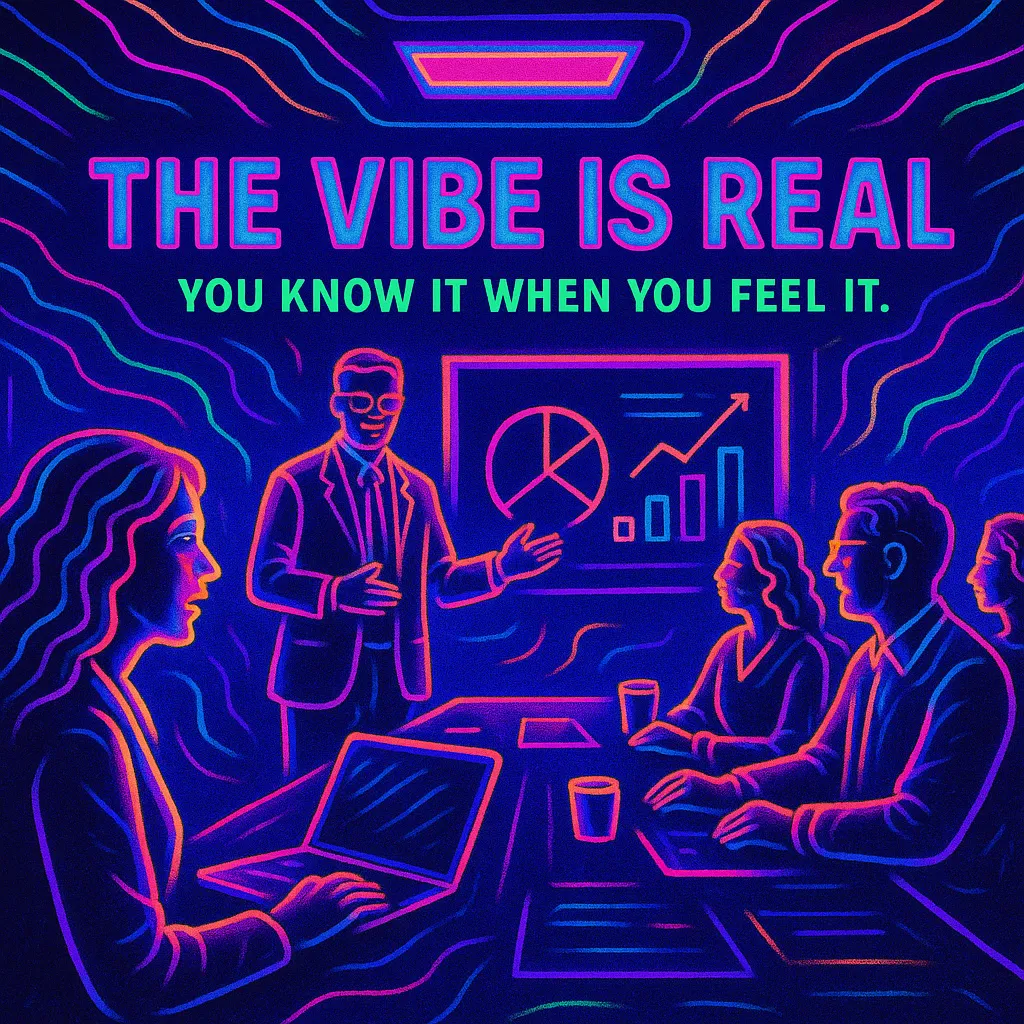Why shifting the mood may be your most underrated lever for change
The Vibe Is Real
You know it when you feel it.
A meeting room that feels tense before a word is spoken.
A team that suddenly seems lighter after a leader cracks a joke.
An organization where something has shifted—but no one’s updated the org chart or sent an email.
Welcome to the world of vibe change management. It’s less about stakeholder matrices and more about emotional resonance. Less about plans and more about presence. And it might be exactly what your change strategy is missing.
Why the Vibe Matters
Culture eats strategy for breakfast—but vibe eats culture as a snack.
Vibe is the unspoken emotional undercurrent of an organization. It’s not in your slide decks, but it’s absolutely in the room. And people respond to it in powerful, often unconscious ways.
When you walk into a group that’s guarded, cautious, and sarcastic, you’re not just navigating resistance—you’re up against a vibe that’s been reinforced over time. Conversely, when the vibe is hopeful, generous, or curious? Change doesn’t just feel possible—it feels safe.
Most change efforts spend their energy managing actions and outputs. Vibe change management says: manage the energy.
Tools of the Vibe Trade
You don’t need incense and sound baths to shift a vibe (although no judgment if that’s your thing). What you do need is intention. Here are some proven levers:
- Language: The words leaders use—hopeful or cynical, empowering or diminishing—set the emotional tone.
- Humor: Disarming, humanizing, and an underrated shortcut to psychological safety.
- Music and sound: The literal vibe. Used thoughtfully, it can shift group dynamics in minutes.
- Space and design: Light, layout, color—environments speak volumes before people do.
- Energy modeling: Leaders set the pace. If they show up frantic or flat, the room follows. If they bring calm confidence, people breathe easier.
Vibe Killers (and How to Stop Them)
Vibes get crushed when:
- Everything is urgent, but nothing is important.
- Leaders confuse stoicism for strength.
- People perform enthusiasm they don’t feel.
- Trust is low and control is high.
If that’s your setting, you don’t need a better change model. You need a vibe intervention.
That could mean hosting a storytelling session instead of another all-hands. Playing music before a town hall. Giving a burned-out team permission to cancel the next meeting and take a walk. Sometimes, the best strategy is creating a mood where people can feel like themselves again.
What To Do Instead
Let’s be clear: vibe isn’t a substitute for rigor. It’s a force multiplier.
So add it to your toolkit:
- Start every stakeholder conversation with: How does this feel right now?
- Notice team energy before, during, and after meetings. Track it.
- Make space for check-ins that are emotional, not just operational.
- Help leaders model mood-shifting behaviors—not just messaging.
You’re not just managing a roadmap. You’re conducting an emotional symphony.
Final Thought
You don’t have to be a “vibes person” to manage the vibe. You just have to be present, attuned, and brave enough to name what’s in the room. Change work isn’t just technical—it’s felt. And when the vibe shifts, people move.
ChangeGuild: Power to the Practitioner™
Recommended Reading
If you enjoyed this article, you might also find these helpful:

The Mood Matters More Than You Think
Change isn’t just about plans—it’s about presence. If your strategy isn’t landing, maybe it’s not the model. Maybe it’s the mood.
We help leaders and teams tap into the emotional dynamics that drive real momentum. Want support shifting the vibe on your team or project? Let’s talk.





